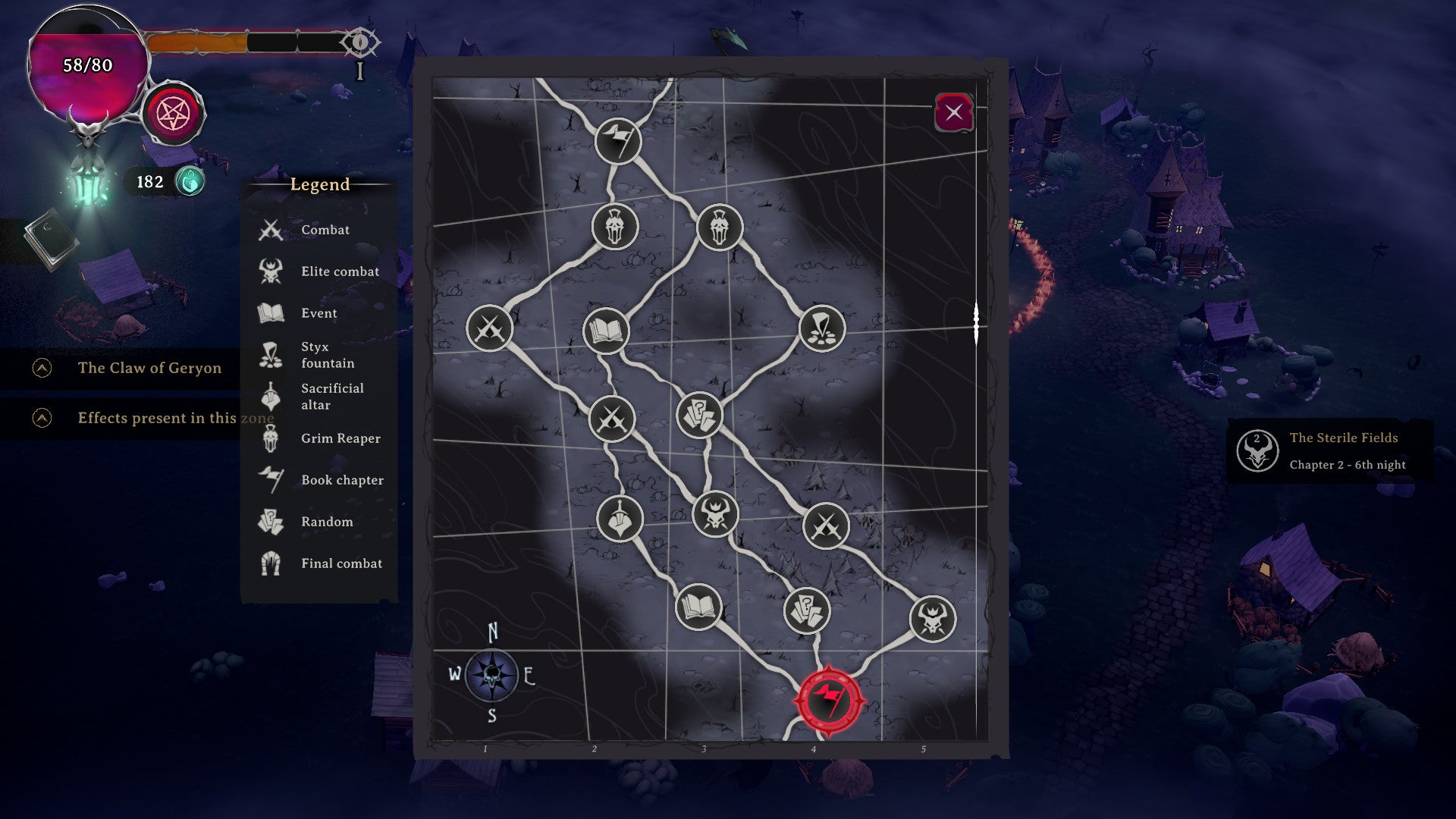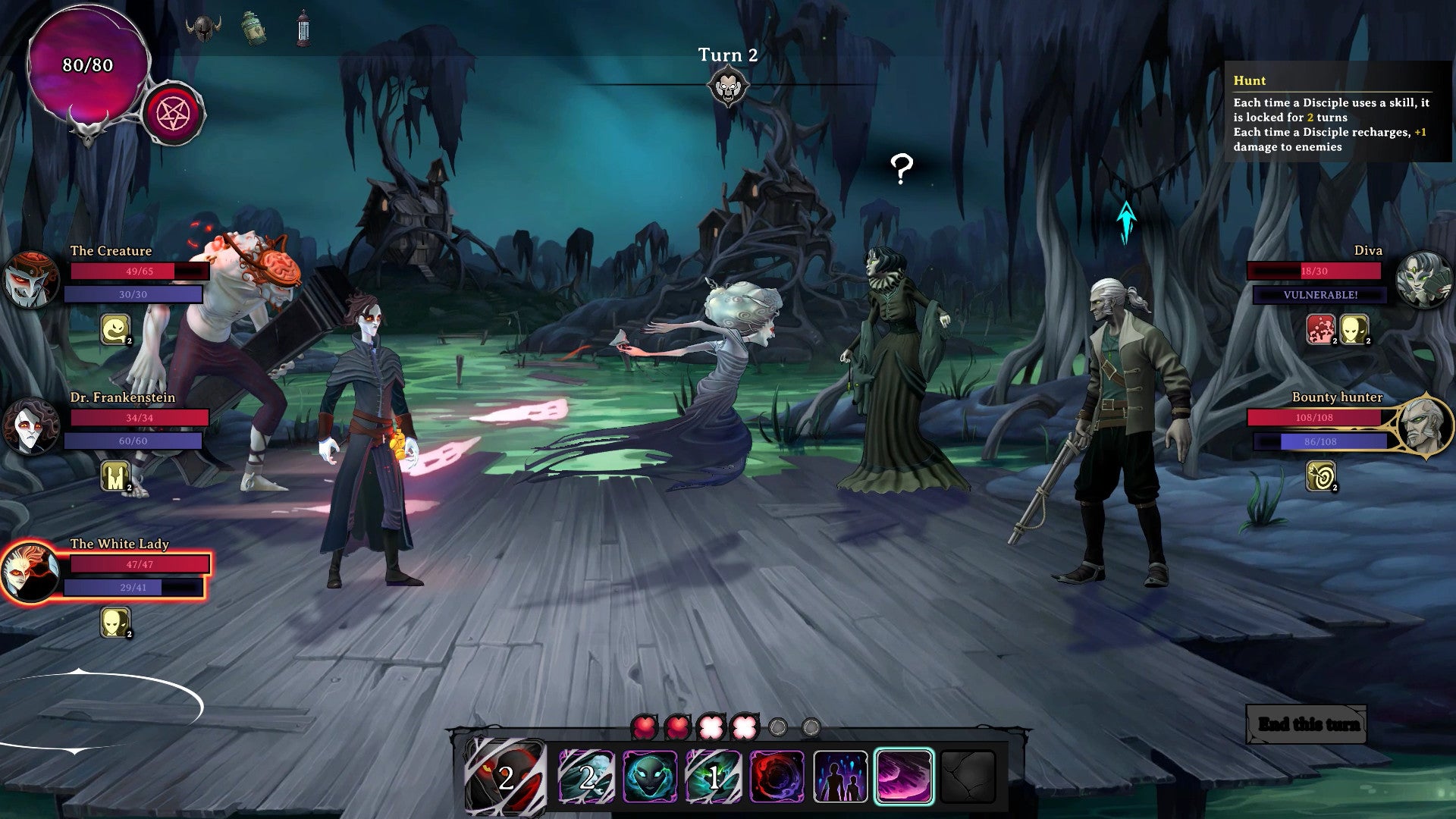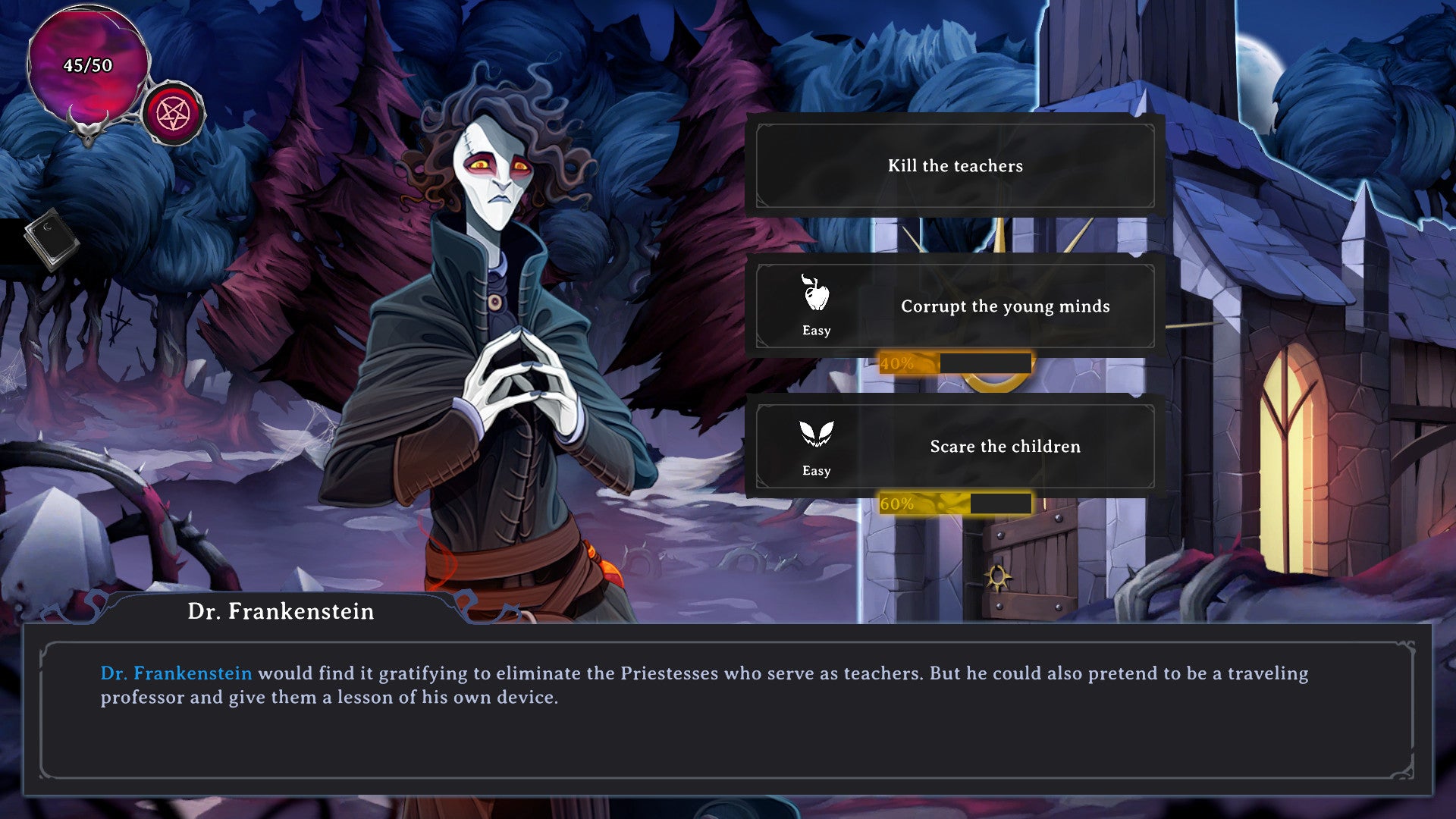Now I know Tim Burton-inspired things can be a little polarising, but playing Rogue Lords isn’t quite the same as sitting through The Nightmare Before Christmas. At the start of each run, you select which three famous spooks you’ll take with you. From there, the game is a little like Slay The Spire, offering up a map with different routes that can take you to combat, minibosses, random events, shops full of relics, and more. While a lot of the characters come from ye olde books and legends, they’re not all necessarily from the same time period. The developers wanted a cast of spooks that players would recognise, as well as a diverse set of characters that could fall into different character archetypes (like spellcasters, tanks and the like). With the first three, you’ll find that the Headless Horseman is pretty tanky (which amused me considering his lack of noggin), with abilities that protect himself and take damage away from friendlies. Dracula has a bunch of skills that buff other characters, while Bloody Mary is kind of like your DPS with abilities that deal pretty high damage. You’ll unlock more characters as the game progresses too. These are the folks you’ll see most of, picking and choosing which abilities to use in combat, or selecting one to scare off some villagers to earn skill points in events. But these technically aren’t the characters you play. You’re the devil, and that comes with a certain skill that makes it very clear he’s his own character, too: the ability to cheat. “We wanted to give the devil something unique, something that your current disciples couldn’t do,” game director Jérémie Monedero tells me. “We knew, very early that we needed something very special for the devil, and we talked about the fact that, in folklore, the devil is someone who likes to game. “At the beginning of the concept, it was not a roguelike, it was more an RPG,” he adds. “At some stage it was a tactical game, mostly like XCOM, and the devil was able to break the minds of the different characters on the battlefield and take control of them if you wanted.” While taking control of people didn’t make it in, you can still do some equally devilish things. You have a little round meter at the top of the screen that’s basically your devil juice (actually named Diabolic Essence). It’s essentially what’s allowing the devil and his minions to be up on Earth, and it doubles up as your life force. If you run out, it’s game over. But you can also use it to influence the game in “cheaty” ways, too. Don’t like the route you’ve taken up the map? Use a little bit to hop over to a different event. Disciples’ health looking a little low? Spend some devil juice to zip it back up. Enemies have some nice buffs? I’ll be taking those! “The player can consume essence at any time to resolve a situation, without losing rewards, but they are potentially putting themselves in danger by doing so,” lead game designer Sébastian Perouffe tells me. “The use of the devil’s powers becomes a measure of the risk the player is willing to take. This makes the question asked much more interesting, especially in the roguelike setting.” During my time with Rogue Lords, I had a habit of “cheating” as a last resort. When games offer you something powerful, it’s easy to feel like you need to hoard it, like potions in an RPG. But with the devil’s Diabolic Essence, it’s a lot more fun when you’re very liberal with it. Getting into an elite combat, for example, it’s so easy to get rid of whatever minions they have with them by just sacrificing a bit of your juice to demolish their health bars. There are plenty of opportunities to refill your Diabolic Essence on the rest of your run, so as long as you keep an eye on that meter there’s a lot you can get away with. The game feels tailored for you to use this feature, too, which brings me to one of my only gripes with Rogue Lords. At times, the combat can feel drawn out. It’s turn-based, and you have a certain amount of energy to spend on your disciples’ moves before your go is up. On top of that, once a disciple has used an ability, they need to spend more energy to recharge it. I’ve yet to see how this system evolves later on in the game, but during those early hours when your characters have fewer abilities, I ended up spending a lot more time recharging than attacking. Perhaps this is done to encourage ample swigs of devil juice to be consumed, but if you’re the sort of person who wants to save it for a rainy day, you may find your patience running thin. That’s a relatively small complaint though, and one that I could say of a lot of different roguelikes. But Rogue Lords stands out to me because it adds good stuff to the traditional roguelike formula. Its overarching plot of a devil trying to get revenge on the living isn’t exactly new, but the way it’s told through actual storybooks is a neat touch. As you travel up the map, you’ll have to stop at sections where a literal book will open on your screen, too, and the devil will narrate it like a moody audiobook. “We didn’t want to just create a visual universe, but a kind of dystopian world,” says art director Camille Lisoir. She tells me she read through loads of books and folklore as research on the game’s various spooks, and creating the storybook-like narrative was a way to help establish their own versions of these well-worn characters. It’s a pleasant bit of downtime to reach a story section, sit back in your chair, and listen to some devilish dramas, and I’m very much looking forward to hearing the rest. If you fancy giving it a go yourself, Rogue Lords is set to release on September 30th on Steam, with Nintendo Switch, PS4 and Xbox One versions to follow in 2022.


